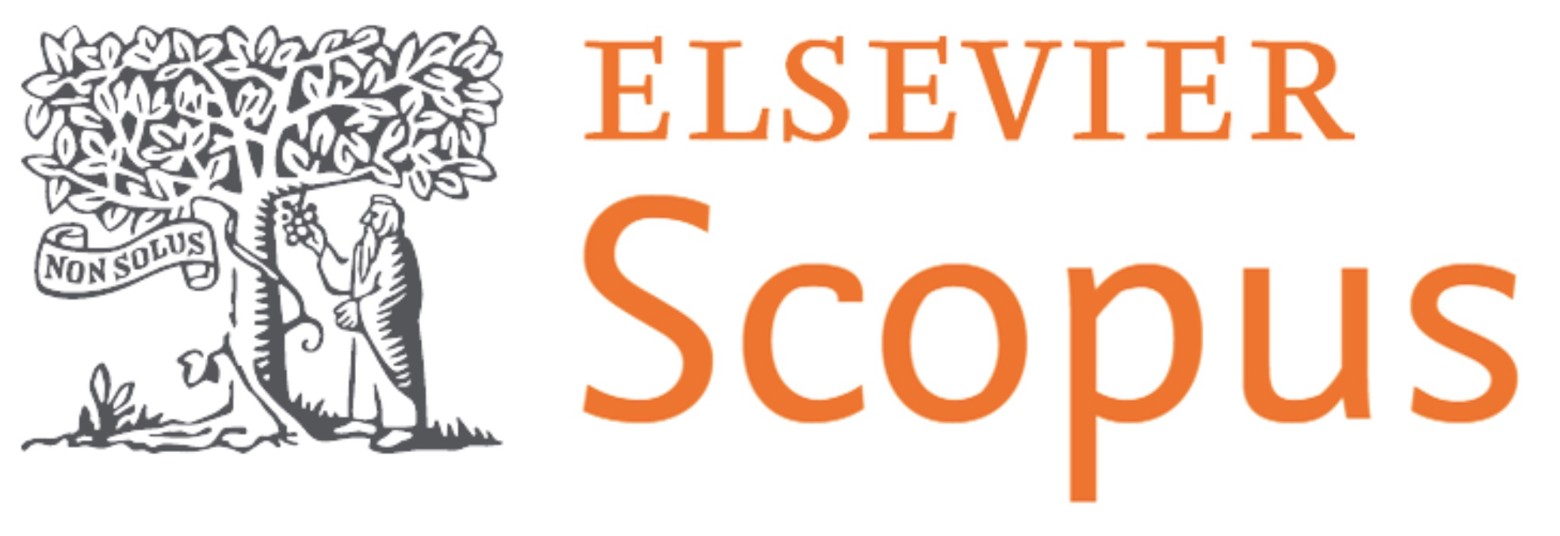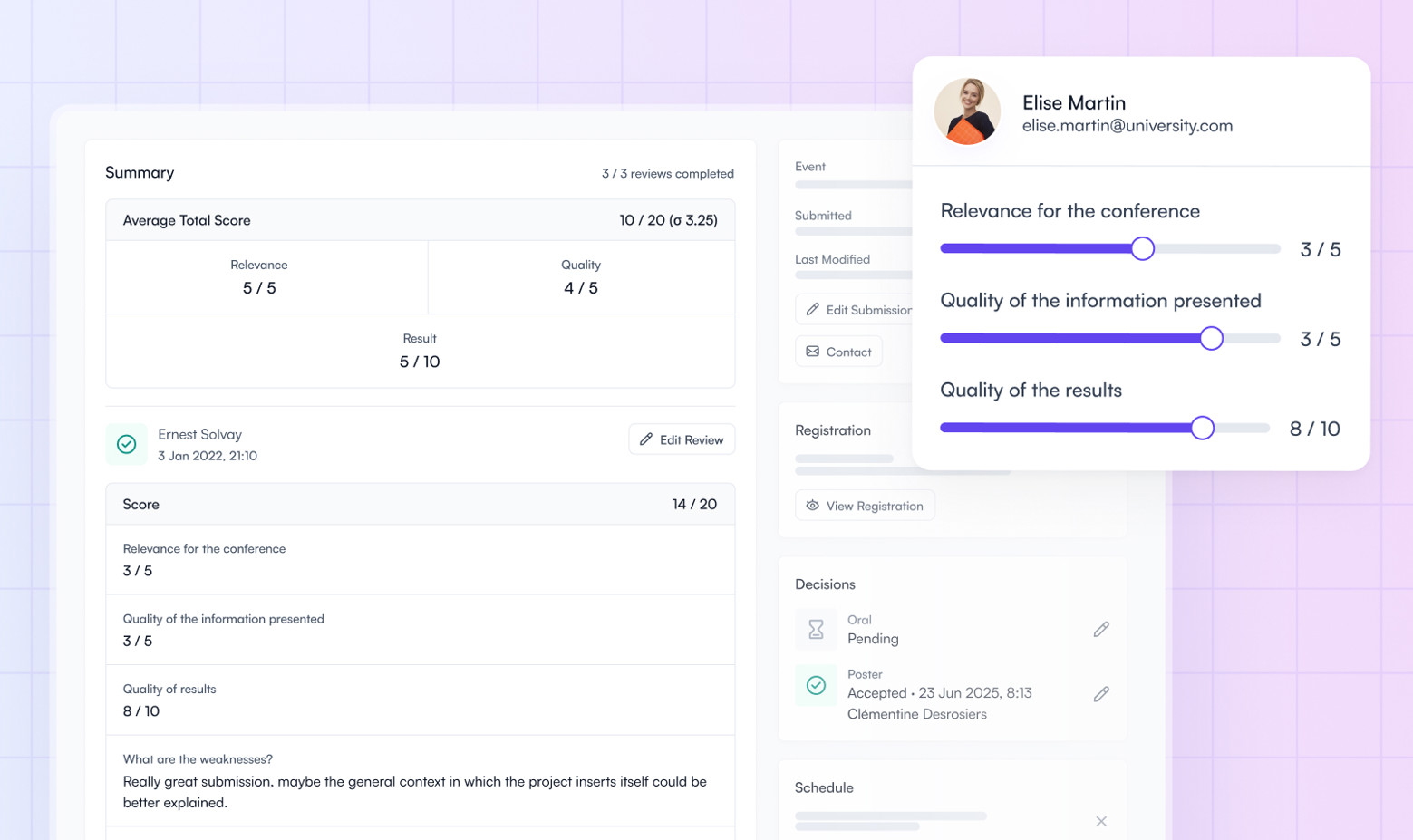How to Index Conference Proceedings in Scopus: A Comprehensive Guide for Academic Organizers
Curious about how to index conference proceedings in Scopus? You are not alone.
Scopus, managed by Elsevier, is one of the world’s most comprehensive abstract and citation databases for peer-reviewed literature. It spans across disciplines, indexing everything from scientific journals and academic books to entire sets of conference proceedings.
For many in academia, Scopus is the go-to resource for tracking scholarly contributions, mapping research trends, and measuring citations at both the author and institutional levels.
And for conference organizers, Scopus carries particular weight. Having Scopus indexed conferences is more than a symbol of credibility; it ensures that the research presented at your event becomes part of the global scholarly record.
Indexed papers are easier to discover, more likely to be cited, and often regarded as higher in quality by peers, reviewers, and funding bodies.
The benefits continue long after a conference ends. Authors are drawn to Scopus-indexed conferences because the visibility can strengthen their careers. High-profile speakers are more likely to accept invitations, knowing their contributions will have a lasting impact.
Institutions recognize the prestige that comes with Scopus indexing, which can give your event a competitive edge over others vying for attention in the crowded academic calendar.
The Scopus database transforms conference proceedings, which differ from conference papers; they are a short-lived collection of papers into a permanent, widely accessible resource that advances scholarship and reinforces the reputation of your event.
Check out Fourwaves’ tips on how to write conference proceedings.
Get Your Conference Proceedings Indexed in Scopus: Step-by-Step Process

Earning Scopus indexing for your conference is not something that happens automatically. It requires planning, attention to detail, and a commitment to academic quality from the very beginning.
Organizers who succeed usually follow a clear sequence of steps, each one building on the last to ensure that their proceedings meet the standards Scopus expects.
Step 1: Plan Ahead
The process begins long before the first keynote speaker is invited or the first submission arrives.
If you want to publish conference proceedings, particularly for Scopus indexed journals, preparations should start at least six to twelve months before the event. This lead time gives you space to make strategic choices that will influence the outcome.
One of the most important is selecting a publisher (step 3). Partnering with a reputable publisher experienced in Scopus indexing, such as Springer or IEEE Xplore, can improve your chances of acceptance.
You might also need to have an ISSN number if you're not going through an established publisher.
Equally critical is the focus of your conference. Scopus values conference proceedings that are relevant to current research trends and that make a notable contribution to their field. Defining a clear theme early on not only attracts stronger submissions, but also helps reviewers see the value of your event.
Step 2: Establish a Rigorous Peer-review Process
Scopus looks for evidence that the work published in your proceedings meets high academic standards, based on its content policy and selection criterias.
That begins with a rigorous peer-review. Here are some of the requirements:
- Transparent Review Policy: the review process must be clearly described and be publicly available.
- Reviewer Independance: reviewers must be experts in the field and not simply members of the organizing committee. They should ideally represent different institutions or regions.
- Multiple Reviewers Per Paper: each submissions must involve at least two reviewers per paper.
- Documented Review Process: there must be a clear record of the review process, including the assigned reviewers, acceptance/rejection decisions. The Scopus Content Selection & Advisory Board (CSAB) might request evidence.
- Consistency and Fairness: all submissions must be evaluated with the same rigor and using the same standards and criteria.
- Ethical Standards and Integrity: Conferences must enforce plagiarism checks, disclose conflict of interests and compliance with ethical research guidelines.
- Editorial Oversight: there should be an editorial board to supervise the process and ensure quality control, and to make the final decision based on review results.
Step 3: Collaborate with Established Publishers
While some organizers attempt to handle publication themselves, the majority find it far more effective to partner with publishers that already have experience working with Scopus.
Outlets like E3S Web of Conferences or EPJ Web of Conferences have established workflows designed to meet Scopus’s standards. These publishers can guide you through submission deadlines, formatting guidelines, and editorial procedures, reducing the risk of errors that could delay or disrupt your application.
They also take responsibility for submitting the proceedings to Scopus on your behalf, which ensures that the publication process is handled professionally from start to finish.
Step 4: Submit to Scopus
If you or your publisher are ready to proceed, the next step is submission. Scopus requires a complete package of documents: details about the conference, information about the editorial board, a description of the peer-review process, and sample papers that demonstrate the quality of the proceedings. All of this is submitted through the Scopus Title Suggestion form.
Once submitted, patience is key. The review period can last several months, during which the content selection and advisory Bboard evaluates the material against strict criteria.
Step 5: Post-Submission Follow-up
Even after submission, the work is not finished. Scopus may contact you with questions, requests for clarification, or suggestions for improvement. Remaining responsive and promptly addressing feedback shows your commitment to quality and can help move the process forward.
If your conference proceedings are accepted, the next step is to highlight this achievement. Promoting the indexing status on your event website, in your upcoming call for papers, and across academic networks indicates to researchers that your conference is a reputable venue for high-quality scholarship, paving the way for even greater participation in the future.
Scopus Indexing Criteria for Conference Proceedings
Earning Scopus indexing requires meeting a defined set of criteria that reflects academic rigor and editorial transparency. The Scopus Content Selection & Advisory Board (CSAB) carefully evaluates every application to ensure that only conferences with high scholarly standards are included in the database.
For organizers, understanding these requirements upfront is essential for building proceedings that stand a real chance of acceptance.
Eligibility Requirements
The first step toward Scopus indexing is ensuring that your proceedings are eligible for consideration.
- Peer-reviewed content: Scopus only accepts proceedings that publish peer-reviewed research. This means every paper must be evaluated by qualified reviewers under a transparent and documented review process.
- Ethical publishing practices: Conferences must adhere to international standards of publishing ethics, including clear policies on plagiarism, conflicts of interest, and research integrity.
- Valid ISSN and publication schedule: An International Standard Serial Number (ISSN) is mandatory for proceedings. Consistency in publishing, whether annually, biennially, or otherwise, is also required to demonstrate reliability and sustainability.
- Relevance and contribution: Proceedings should be aligned with their declared subject areas and demonstrate a meaningful contribution to advancing knowledge in the field.
Quality and Editorial Standards

The Scopus Content Selection and Advisory Board (CSAB) at their biannual meeting in November 2024. Source: https://www.elsevier.com/connect/20-years-of-scopus-how-research-oversight-is-evolving-to-confront-new-challenges
Once eligibility is established, the focus shifts to the quality of the content and the editorial processes behind it.
- Role of the CSAB: The Scopus Content Selection & Advisory Board is an independent body of subject experts that reviews each submission. Their evaluation ensures that indexed proceedings meet the same standards as leading academic journals.
- Evaluation criteria: The CSAB looks at several aspects: clarity and originality of content, transparency of editorial policies, international diversity of authorship, and the degree to which the proceedings are cited in scholarly work. A conference limited to a narrow region or institution is less likely to be accepted.
- Citation metrics and visibility: Metrics such as CiteScore and SCImago Journal Rank (SJR) provide additional context on the influence and reach of the proceedings. While new conferences may not yet have high citation counts, demonstrating potential for impact through strong editorial practices and international participation is critical.
By aligning with these criteria, conference organizers signal that their proceedings are more than just a collection of papers, they represent a scholarly record worthy of inclusion in one of the world’s most trusted academic databases.
Beyond Scopus: Exploring Other Indexing Opportunities

Although Scopus is one of the most respected academic databases, it isn’t the only way to gain visibility. Many successful conferences target multiple indexing options, ensuring that their proceedings reach the broadest audience.
Web of Science (WoS)
One of the most prestigious alternatives is the Web of Science (WoS). Like Scopus, it is highly selective, but its evaluation process is even more rigorous. Web of Science looks closely at editorial practices, peer review, international diversity, and contribution to the field before granting inclusion.
Conferences indexed in WoS benefit from exceptional credibility, as universities and funding bodies often use this database to assess research quality. The trade-off is that gaining acceptance can take more time and may be limited to conferences with a proven record of academic excellence.
Google Scholar
On the other end of the spectrum is Google Scholar, which offers broad accessibility rather than exclusivity. Unlike Scopus or WoS, Google Scholar applies less strict selection criteria, which makes it easier for conference proceedings to be visible there. While it may lack the prestige of more selective databases, it remains a valuable tool for discoverability, especially for independent researchers and readers outside well-funded institutions. Checkout the inclusion guidelines in the Google Scholar Help.
Scimago Ranking
Scimago provides another perspective. Rather than serving as a primary index, it evaluates and ranks journals and conference proceedings already indexed in Scopus or WoS. Its metrics, like the SCImago Journal Rank (SJR), help conference organizers gauge the visibility and influence of their proceedings against others in their field.
For event planners, the message is clear: using only one indexing platform can limit exposure. By targeting Scopus and also including Web of Science or Google Scholar, you expand your conference's presence in the academic world. This helps authors seeking recognition and bolsters the event's long-term reputation.
Set Your Conference Up for Scopus Indexing Success
By now, the path to Scopus indexing should feel clearer. Scopus indexed journals come down to a few essential aspects: rigorous peer review, transparent editorial standards, collaboration with reputable publishing partners, and a formal submission to Scopus that reflects the quality of the proceedings.
Conferences that take these steps position themselves not only for acceptance but also for long-term recognition in the academic world.
Conference organizers who map out their editorial standards, enforce strict quality controls, and build an international community around their event are the ones who make their mark.
Conferences with Scopus-indexed proceedings enjoy greater credibility in their disciplines, stronger visibility in global research networks, and the assurance that the ideas shared at their event will receive publication visibility.
Get Help With a Proven Conference Management Software

Streamline your conference peer-view workflow and keep track of review results.
Achieving this level of organization isn’t easy. Running a high-standard, peer-reviewed conference requires juggling countless details, from submission workflows and reviewer assignments to scheduling and participant communications. Without the right tools, organizers can easily lose valuable time on logistics, rather than focusing on strategy and quality.
That’s why more and more academic organizers rely on platforms like Fourwaves. By centralizing submission management, peer review, scheduling, and communications,
Fourwaves makes it possible to handle the administrative load while maintaining the highest scholarly standards. Instead of being bogged down by manual processes, organizers gain the freedom to focus on what truly matters: the quality of their conference and the long-term goals of their academic community.
Streamline submissions and peer-reviews with the leading academic conference platform.
FAQs: How to Index Conference Proceedings in Scopus
The most reliable way is to check directly on Scopus.com. You can search by the conference name, publisher, or ISSN of the proceedings. Be cautious with third-party claims; some organizers may advertise “Scopus indexing” without official confirmation. The database itself is always the final authority.
Patience is part of the process. Once submitted, proceedings usually take six months to a year to move through the review cycle. Scopus’s Content Selection and Advisory Board evaluates each submission carefully, and the review may take longer if additional documentation or clarifications are requested.
Not strictly, but it can make a big difference. Being indexed in Scopus increases visibility, credibility, and the likelihood of citations.
For early-career researchers, publishing in Scopus-indexed venues is often a stepping stone toward career advancement, funding opportunities, and collaborations. While recognition can come from other sources, Scopus remains a reference point in many disciplines.
Yes. Acceptance is not permanent. If a conference lowers its academic standards, neglects peer review, or becomes inconsistent in its publishing schedule, Scopus can remove it from the database.
This is why maintaining editorial quality year after year is just as important as being accepted in the first place.
Scopus and Google Scholar serve different purposes. Scopus is highly selective, curated, and tied to citation metrics like CiteScore and SCImago Journal Rank. Google Scholar, on the other hand, is broad and inclusive, capturing a wider range of documents but without the same level of quality control.
Scholars often use both: Scopus for formal recognition and metrics, and Google Scholar for wide discoverability.
The answer depends on your goals. For early-career researchers, presenting work in Scopus-indexed proceedings, even with a modest CiteScore, can help establish visibility and credibility.
However, for long-term academic recognition, publishing in well-respected journals carries more weight. Many researchers follow a dual strategy: using conference proceedings to gain early exposure and feedback, while reserving their most mature work for well-known journals.


